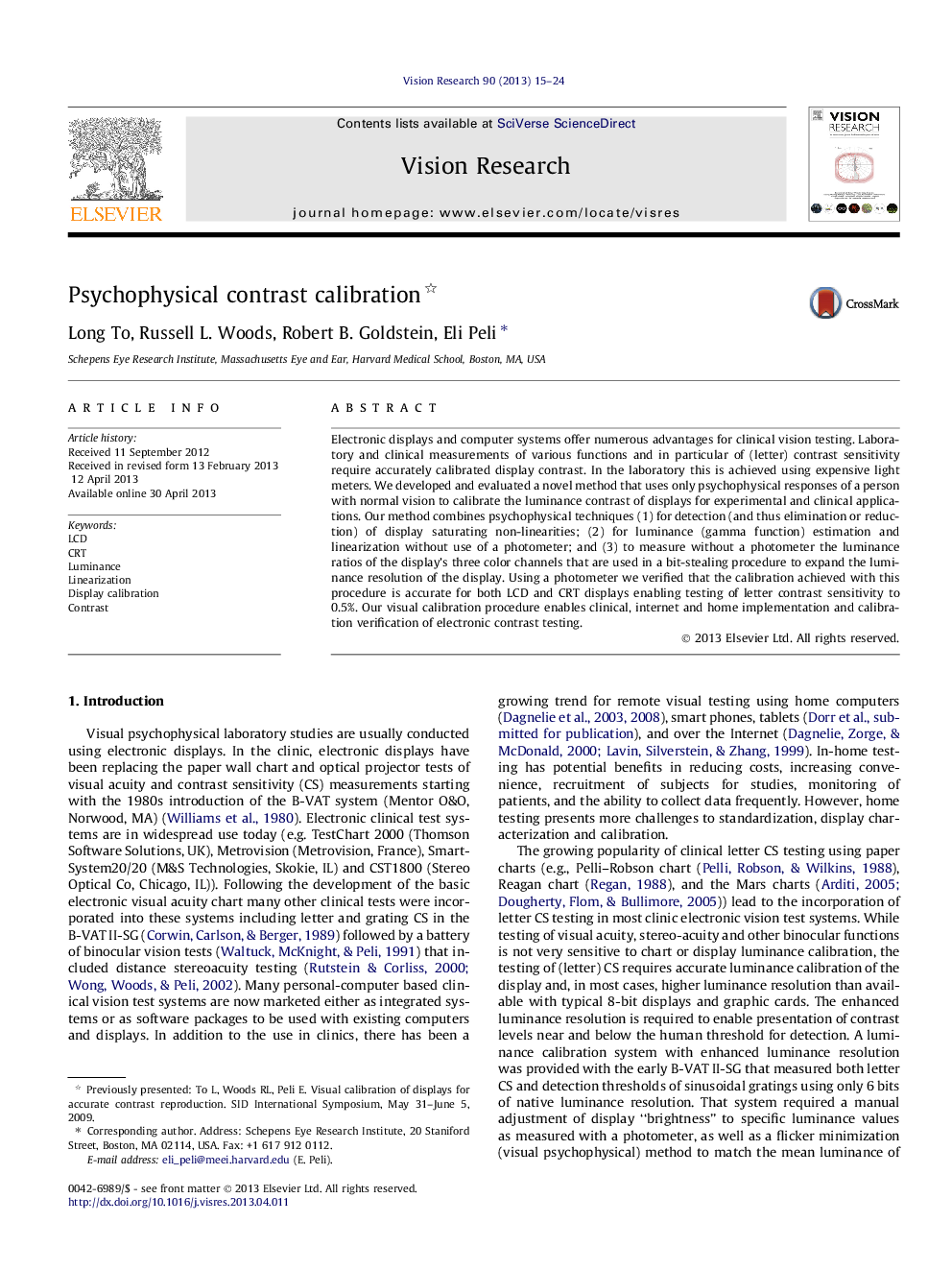| Article ID | Journal | Published Year | Pages | File Type |
|---|---|---|---|---|
| 6203576 | Vision Research | 2013 | 10 Pages |
â¢Easy psychophysical method for contrast calibration of displays without photometer.â¢Combines saturation detection/elimination, gamma fitting, measures of color ratios.â¢Calibrations used with bit-stealing to expand luminance resolution of the display.â¢Validated for CRTs and LCDs enabling tests of letter contrast sensitivity to 0.5%.â¢Enables clinic and home calibration for electronic contrast tests.
Electronic displays and computer systems offer numerous advantages for clinical vision testing. Laboratory and clinical measurements of various functions and in particular of (letter) contrast sensitivity require accurately calibrated display contrast. In the laboratory this is achieved using expensive light meters. We developed and evaluated a novel method that uses only psychophysical responses of a person with normal vision to calibrate the luminance contrast of displays for experimental and clinical applications. Our method combines psychophysical techniques (1) for detection (and thus elimination or reduction) of display saturating non-linearities; (2) for luminance (gamma function) estimation and linearization without use of a photometer; and (3) to measure without a photometer the luminance ratios of the display's three color channels that are used in a bit-stealing procedure to expand the luminance resolution of the display. Using a photometer we verified that the calibration achieved with this procedure is accurate for both LCD and CRT displays enabling testing of letter contrast sensitivity to 0.5%. Our visual calibration procedure enables clinical, internet and home implementation and calibration verification of electronic contrast testing.
